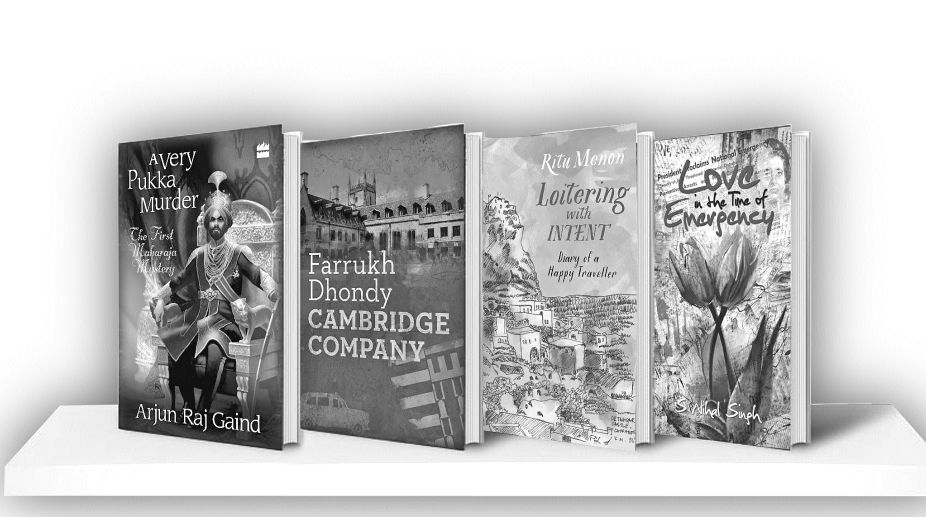Mahatma’s values are being violated every day, says Ritu Menon
As India prepares to mark Martyr’s Day, the New Delhi chapter of the Sarvodaya International Trust and the India International…

Ritu Menon’s book is a travelogue, encompassing 2004 to 2015. Travel books are valid when the author’s personality or expertise give special importance and analysis to the places s/he visits, or because the places visited are themselves rarely travelled and unique. Neither is the case in this book. It is old material, the potted history and political analysis offered are out of date and superficial, the venues are well known and the author brings nothing new to the narrative. Her views and those of her numerous uninteresting companions are uniformly banal. Curiously, she scorns the very tourist industry, which she serves to promote. The sketches in the book are amateurish and unhelpful, and the absence of maps is a serious omission.
Farrukh Dhondy’s book is even more out of date, referring to the author’s stay in UK in the 1960s. It is for Hachette to answer why it has chosen to publish these short pieces about Dhondy’s years as a naïve undergraduate, and also to explain why the book is described as “a work of fiction (when) any resemblance to real persons …is purely coincidental”, when the actual names of real people occur throughout the work, which is clearly autobiographical. This book, neither entertaining nor interesting, is about an archaic setting and archaic notions. Dhondy can doubtless write well, and he is able to convince the reader that what he describes really happened, but he is worth reading only when he is self-deprecating — an aspect all too rare, since this book reveals him to be both an egotist and a snob.
Advertisement
Unlike legitimate doubts about Dhondy’s book, Gaind’s book is undoubtedly fiction, relating to an Indian ruler in 1909 who is also a detective. The text suffers from many defects, not least the author’s overwhelming desire to impress the reader with his great knowledge and vocabulary. Cliches and over-writing abound, and many parts of the book read like a spoof; thus one is subjected to phrases like “a righteous pain in Sikander’s regal behind” and “charging into the bedroom like Cardigan at Balaclava.”
Advertisement
This story is, when boiled down to the essentials, a straightforward locked room mystery that would have required 150 pages instead of the 328 if the excessive verbosity had been excluded. Despite its excessive length, there is no development of character, most descriptions appear as if taken from an auction catalogue, and some anachronistic expressions cannot be dated to 1909. Gaind calls this “the first maharaja mystery”. He would be well advised to introspect and not essay a second one until he can desist from playing the intellectual; gives his uniformly disagreeable characters, including the hero, much more depth; makes all his non-heroes less fat, his women less heroine-like and puts his dictionary and Thesaurus in the dustbin. He would also do well to get over his racial bigotry against Europeans, which he displays ostentatiously to win Indian nationalistic approval — a bias which does not, needless to say, seem to apply to European females.
Nihal Singh’s novella about the Emergency in India from 1975 to 1977 begins with introducing four characters, a former anarchist, a Muslim conformist, a “gritty” woman reporter “committed to her country and profession”, and a veteran journalist-cum-social activist. This promising start, however, is not sustained; the author diverges into disquisitions, which are excessive distractions in view of the brevity of the book, into Indian politics, the cultural inheritance from the British Raj, the impact of censorship on the print media, Indian tastes and traits, the Soviet Union, Bengal under the CPM, and the internal politics of The Statesman of that time. There are short-lived shunts backwards and forwards in time, and some anachronisms — the BJP was hardly a force in the mid-1970s, and Ferraris were totally unknown in Delhi in that period. The gritty woman reporter, who turns out to be the main character, proceeds to Dubai and Singapore, breaking the connections with the Emergency. The remaining three lead characters also do not fulfil their fictional missions; the former anarchist moves to Austria, the Muslim to Belgium, and the activist is jailed and swiftly disappears altogether from the narrative. Love, which is mentioned in the title, or more accurately sex, is described as being practiced exclusively with non-Indians; is that because it is more plausible in India’s notoriously sex-starved society?
As for the Emergency, Nihal Singh observes it was “by no means a dictatorship of the Middle East or Latin American variety”, being more like “vegetarian fascism” and his views of The Statesman of the day will no doubt be controversial — for example, Cushrow Irani by using bugging devices “was playing the role of an amateur Hercule Poirot” . The author notes that the Emergency was felt less in the non-Congress ruled states. Some characters, including many of Indira Gandhi’s close associates, make an appearance by name, but do not remain in the text long enough to give evidence of their own disagreeable personalities. Sanjay Gandhi is described as “living in his own bubble”.
In general, this book is an opportunity lost. Nihal Singh is a journalist who has met everyone that matters from the 1960s onwards, and has personal knowledge and insights into all the dramatic periods of Indian history and foreign policy over six decades that would be valuable today if set down. But fiction is not the right vehicle for him to convey his thoughts on history or on those who made it for good or ill. This material would have made a greater impact as a factual essay.
The reviewer is india’s former Foreign Secretary
Advertisement